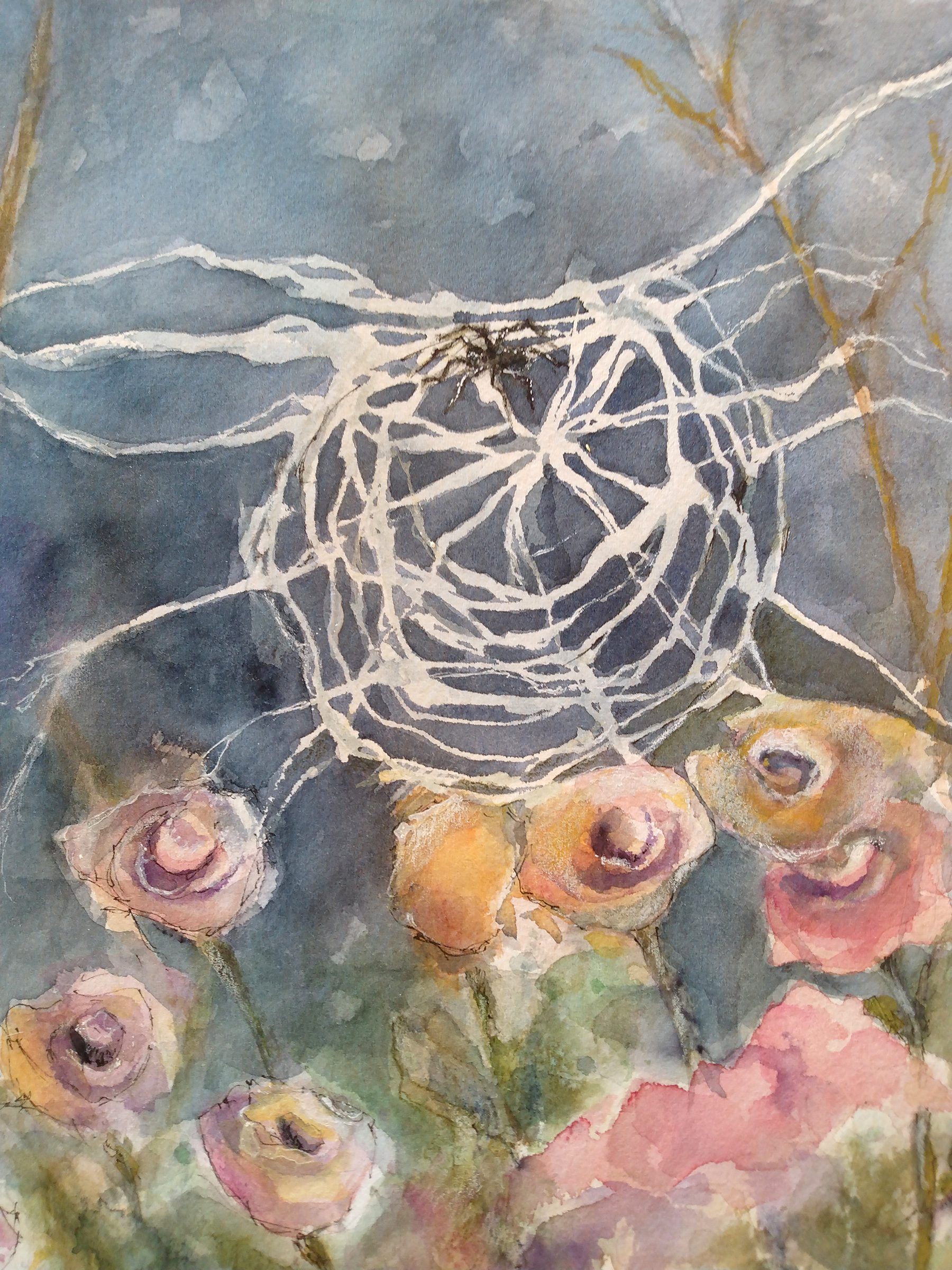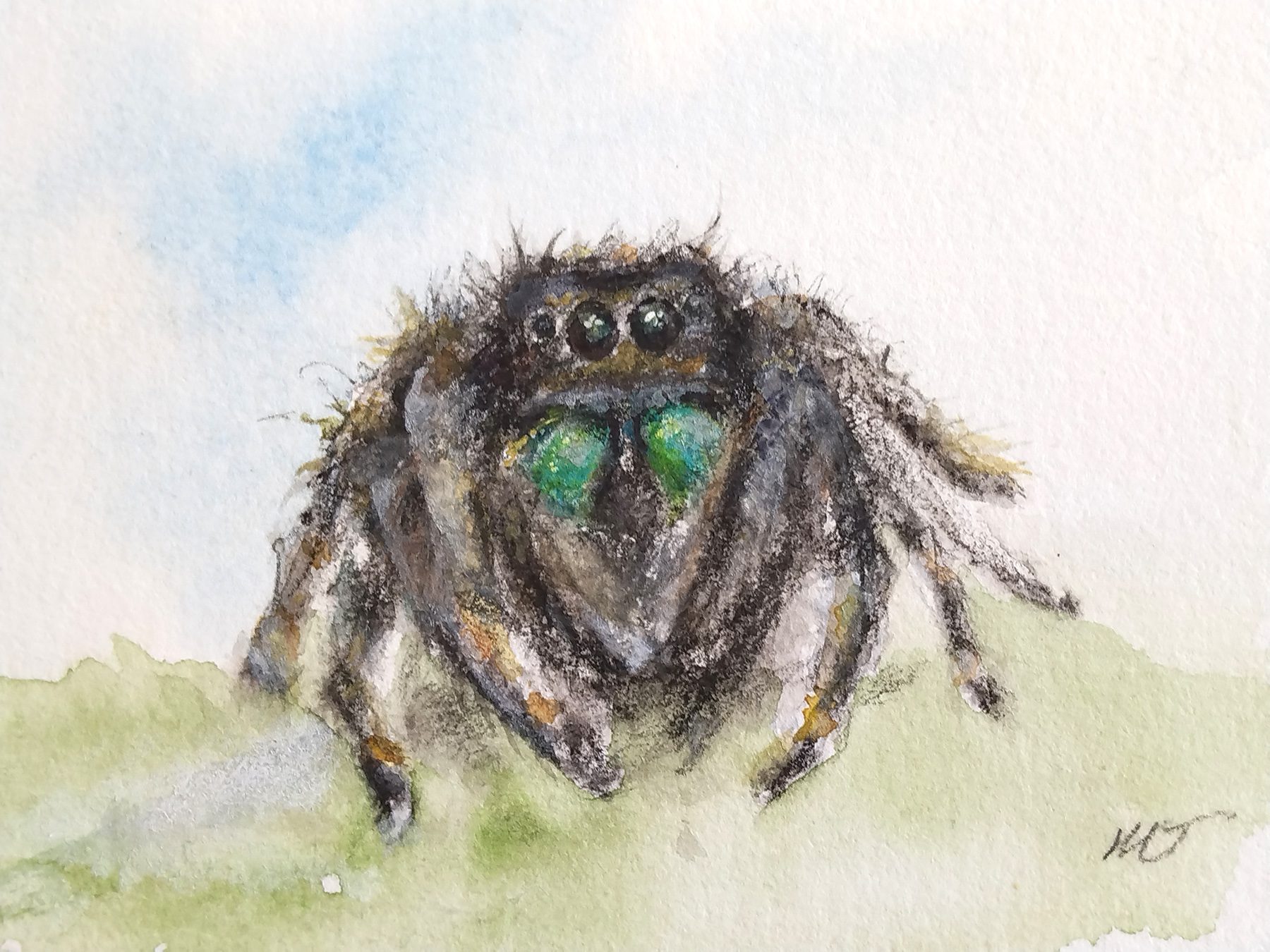Spiders
The announcement was ignored by mainstream media. In December 2023, a tiny spider, lost to the world for almost 100 years and feared extinct, had been found. Acting on historical records, a team of spider experts assembled in northern Portugal and scoured the floor of a forest that had been protected from clear cutting and forest fires for hundreds of years. Their holy grail was Fagilde’s Trapdoor Spider, an unassuming, earth-toned spider that lives underground and tap dances to attract mates. Its rediscovery thrust the sleepy village of Fagilde, population 397, into the conservation limelight. Suddenly, an oft maligned species sparked small-town pride, shining the spotlight on efforts to protect nature.
Usually cast as villains by Hollywood – think Tarantula! and Arachnophobia – spiders have had a bad rap throughout history. Perhaps it’s the fangs, or the four sets of eyes. All those spindly legs don’t help. And who hasn’t popped their cork after finding a spider crawling slowly up their arm? Our web weaving friends have been the fodder of nightmares since the dawn of man. Despite sinister appearances, the stigma is undeserved. They are, in fact, amazing.

Fifty-one thousand species of spiders have been identified. Found on every continent except Antarctica, they come in an endless variety of wild shapes and designer colors. The tiniest, known only by its scientific moniker, Patu digua, is smaller than the head of a pin and dwells in the rain-drenched forests of central Colombia.
The largest, the Goliath birdeater, would send Little Miss Muffet to the emergency room. It weighs as much as a cup of chocolate chips and prowls the forests of northern South America on eight hairy legs that can straddle a dinner plate. Jumping spiders take the prize for best in show. Australia’s gaudy peacock spider, named for a rainbow of eye dazzling iridescence, could give Elton John a run for the title of “Most Flamboyant.”
Indeed, misconceptions abound. Spiders are not insects. They are arachnids, a group of invertebrates that also includes scorpions, ticks, and mites. Anatomical differences are easily remembered as a function of numbers. Insects have three body segments, spiders have two. Insects have six legs, spiders have eight. And the clincher – insects have two antennae. Spiders live an antennae free existence.


Their ability to spin silk is signature. Produced by abominable glands, spider silk is a marvel of nature. Webs are architectural wonders. The Darwin’s bark spider, discovered in a Madagascan national park in 2009, builds webs over rivers. One particularly industrious individual spun a masterpiece spanning more than 80 feet, the largest on record. Time to put away the kayak.
Pound for pound, spider silk is stronger than steel. Used by spiders to ensnare prey, inventive scientists have created numerous products from spider silk, including medical bandages, violin strings, and bullet proof clothing.
As predators, spiders are essential for healthy ecosystems. They eat a staggering number of insects annually, many considered pests. By doing so, they help keep things in balance. You can’t have a better helper in your garden.
Across the Atlantic, Fagilde residents are celebrating the rediscovery. Children previously frightened by spiders are now reporting new sightings. A local bakery created Fagilde Trapdoor Spider Cupcakes to honor their smallest, most famous resident. And the entire community, inspired by a humble spider, has rekindled a reverence for nature.















